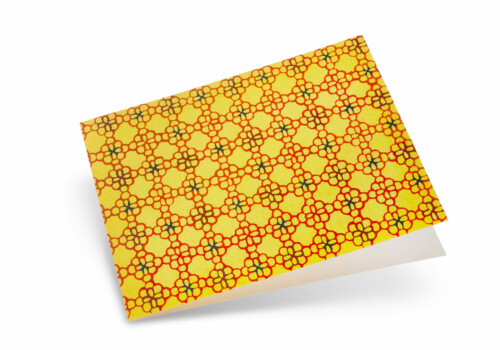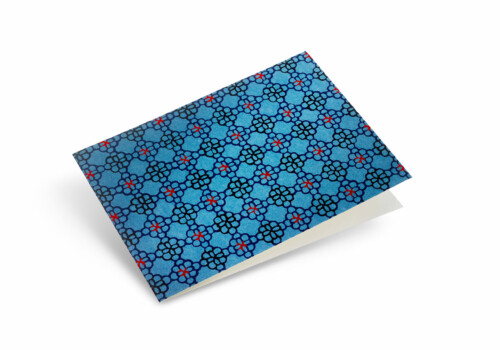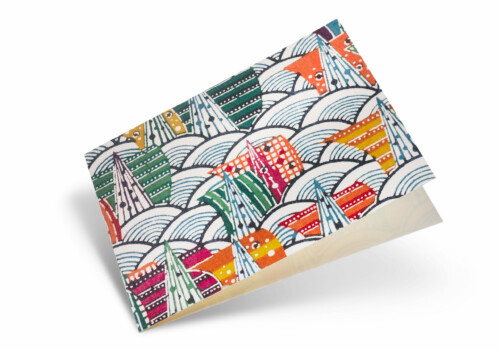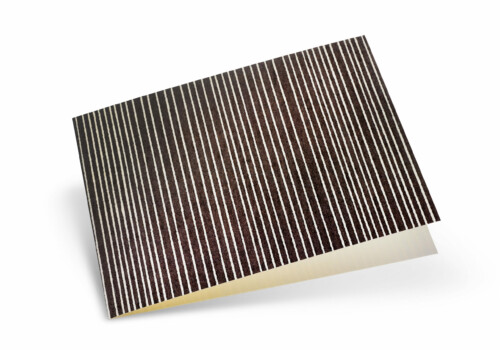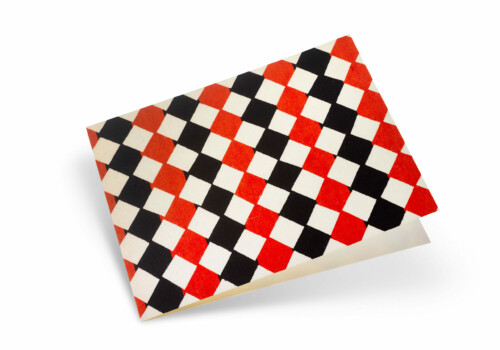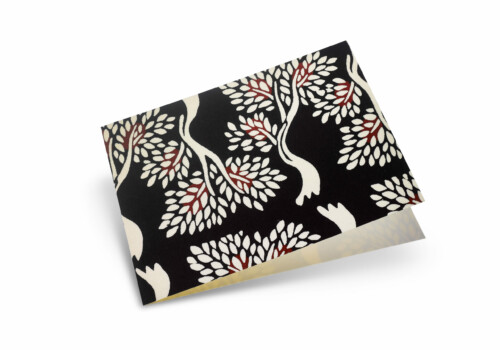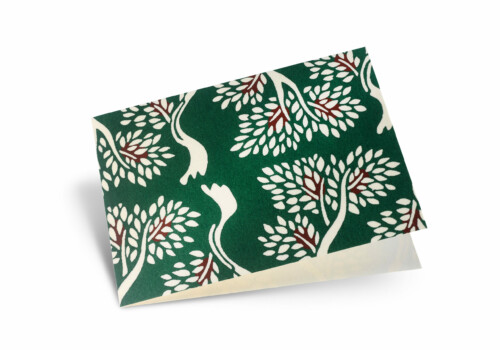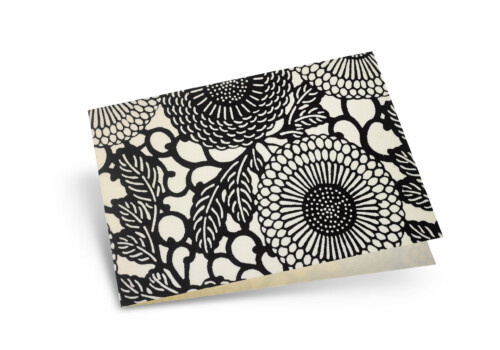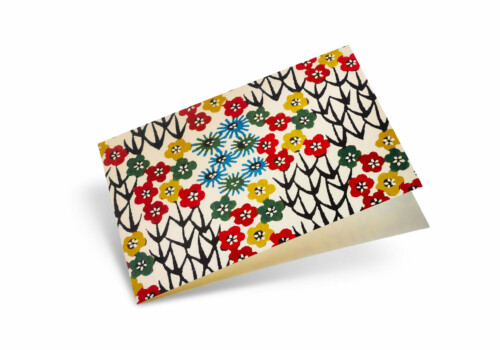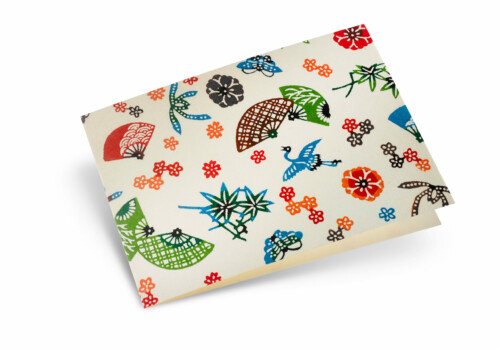
Katazome
the Highest Class of Coloured Papers
Katazome is the highest-grade Japanese coloured paper and is produced sheet-by-sheet using hand-cut stencils (Japanese: “Kata”). This technique is based on the traditional means of Kimono printing and was first applied to fashion papers in the mid-twentieth century. Katazome-shi literally means stencil-coloured paper. The stencil is cut out of moisture-resistant persimmon paper (Shibugami).
This stencil is then placed onto the hand-made, white Kozu paper, manufactured from the bark of mulberry trees. A gelatinous mass made of rice starch is applied, making the paper’s designated blank areas colour-resistant (much like wax does in batik printing). The colouring commences once this paste has dried. Each colour is applied separately in several steps.
The pigments permeate deep into the Kozu texture, giving the colours an inimitable depth. The colour pigments then require a renewed drying stage, making the colours extremely lightfast. In a final step the papers are slowly rinsed in clear water to remove the rice starch paste. The third drying stage sometimes causes the Katazome paper to become slightly wavy.
Product Details
Each card comes with a unique, two-sided cover made of hand-printed Japanese Katazome paper. As we craft every card by hand from the original sheets, your card will look similar to the ones displayed here, but will almost certainly vary in the pattern’s individual excerpt.
The folding card itself is made of the best 200g fine paper in an A6 format, landscape, no watermark, no screen structure, totally pure. The paper consists of 25% cotton fibre, thus giving it depth, grace and longevity. Because of its longevity, cotton paper is often used in the production of bank notes. Also, the risk of yellowing is minimized as cotton does not contain lignin. The semi matte, ivory-coloured hue provides a harmonic background for the vivid colours of the upper and its satin surface is especially well suited for writing on.
Each card is supplied with a matching envelope in a C6 format. The envelope is made from the same fine paper, but with a lighter grammage of 120g

